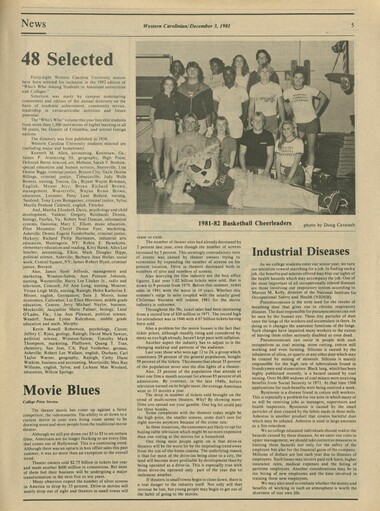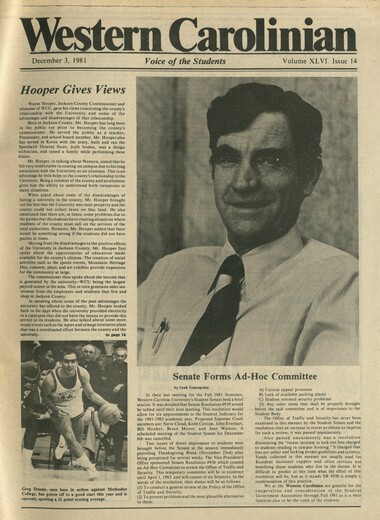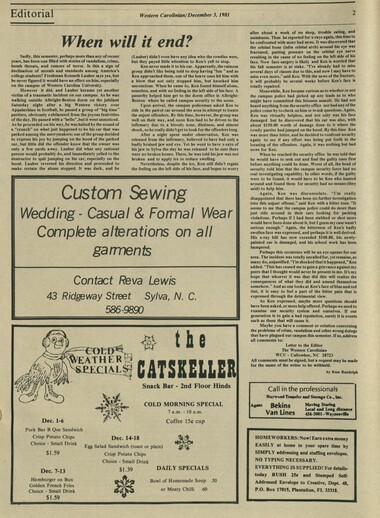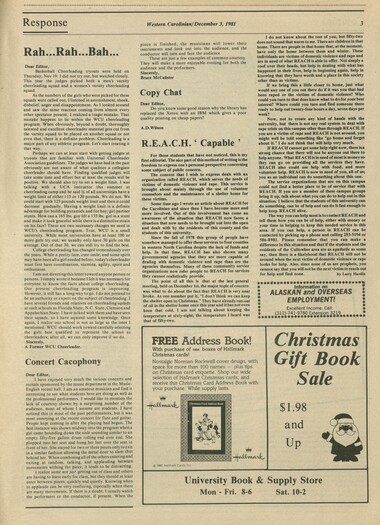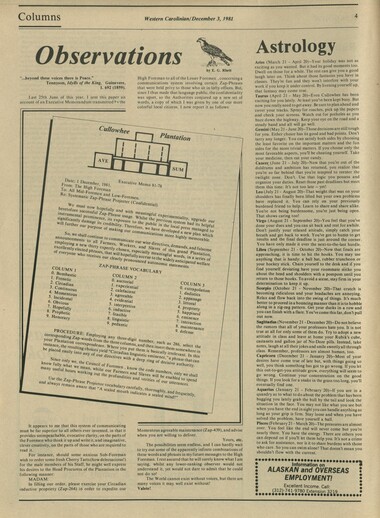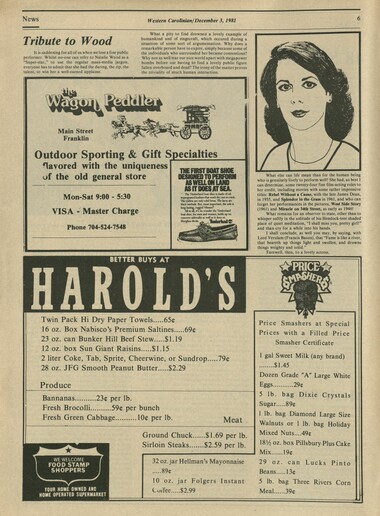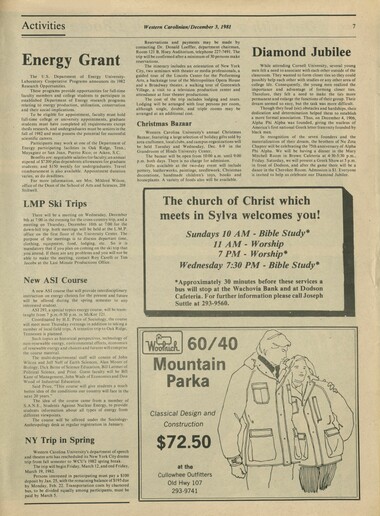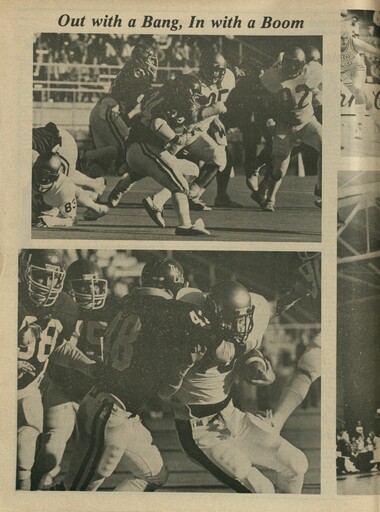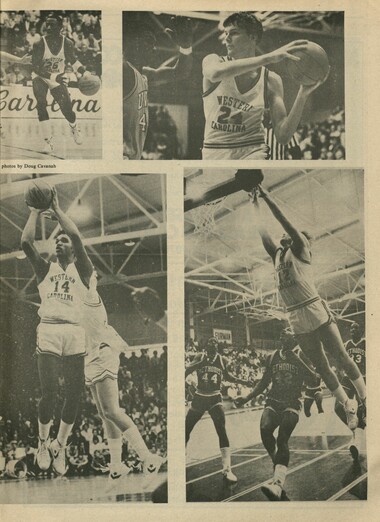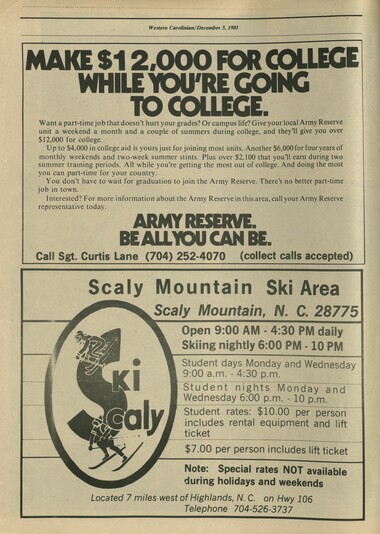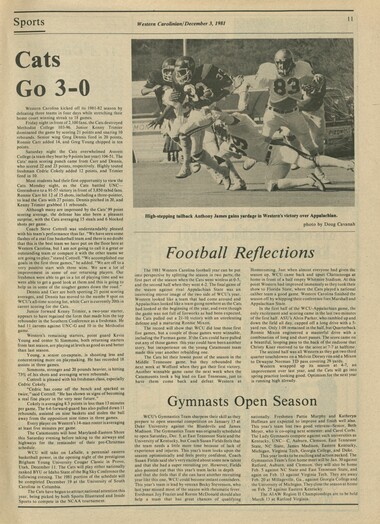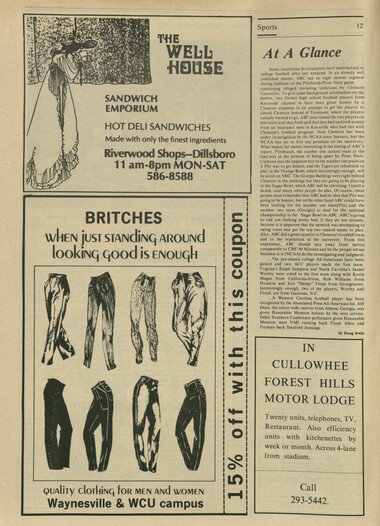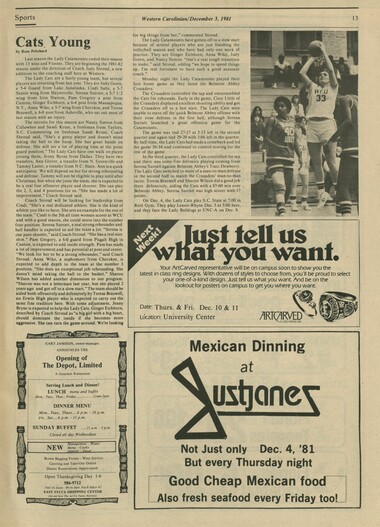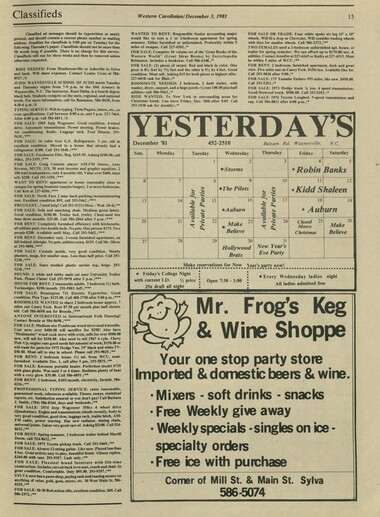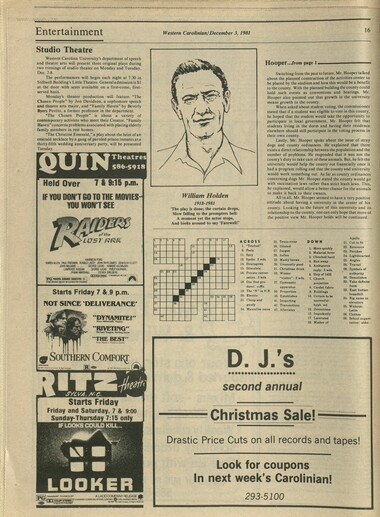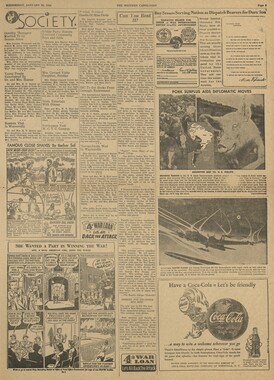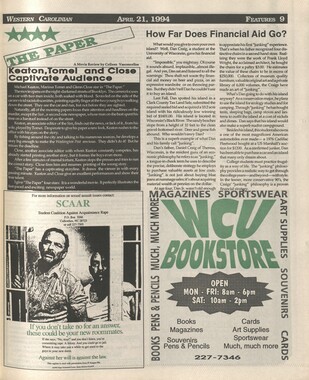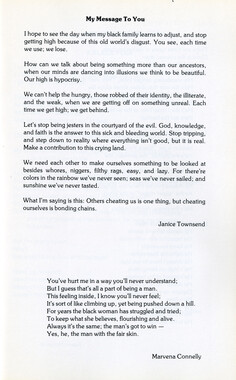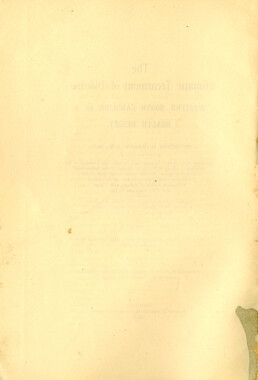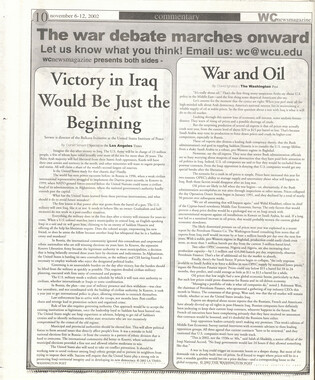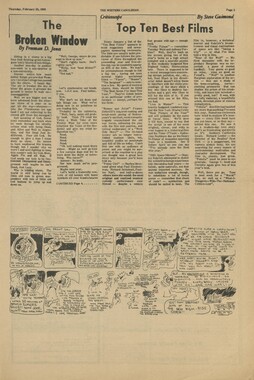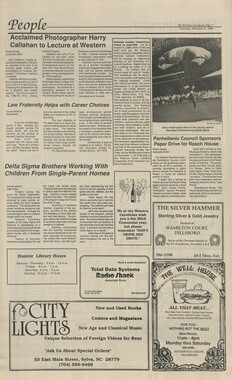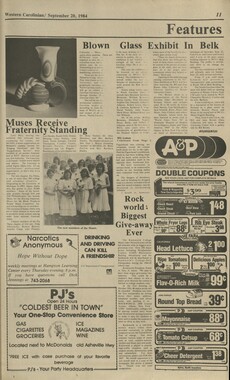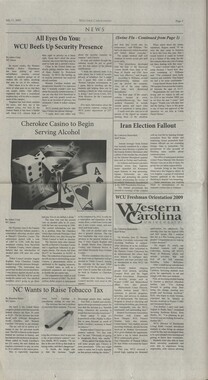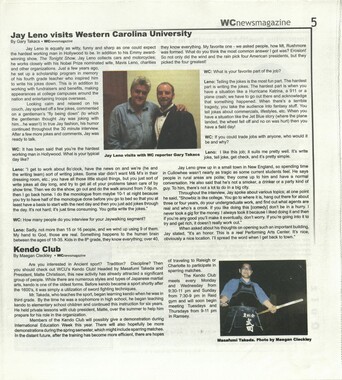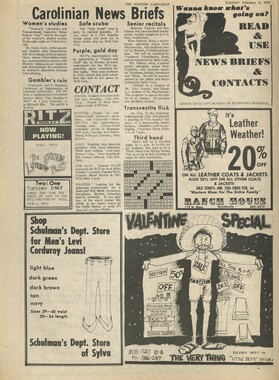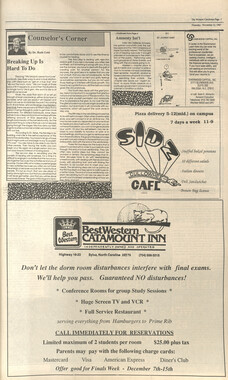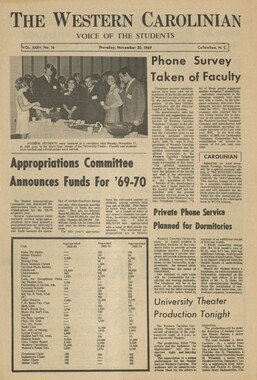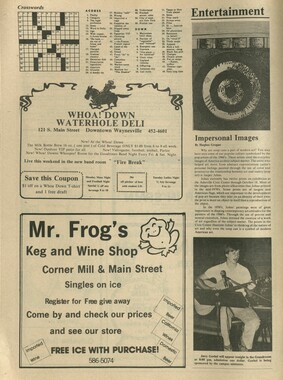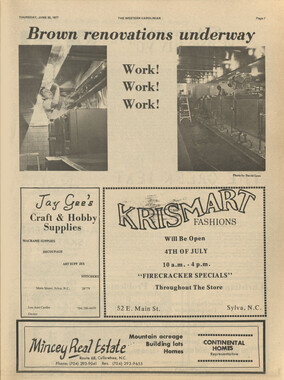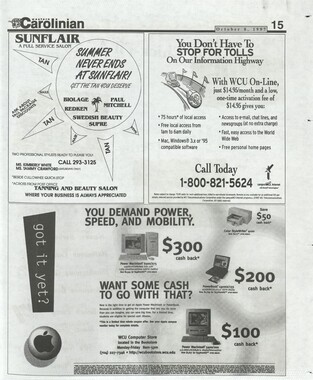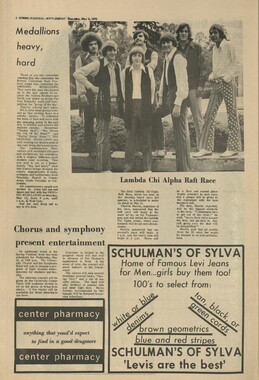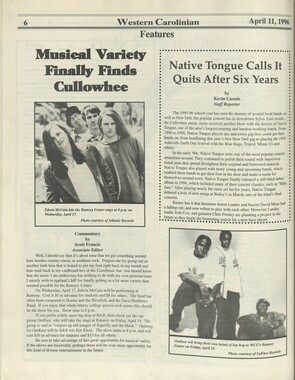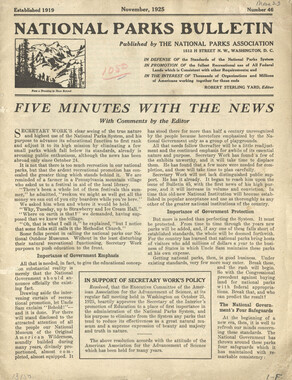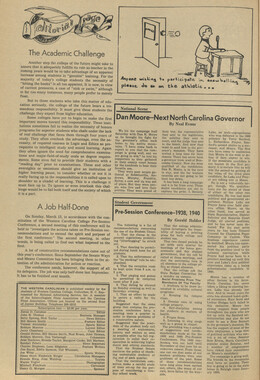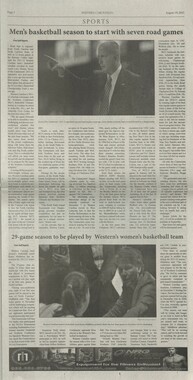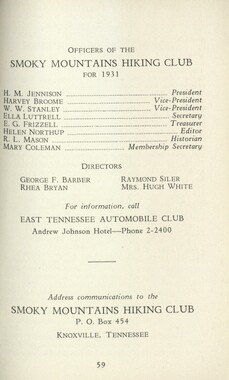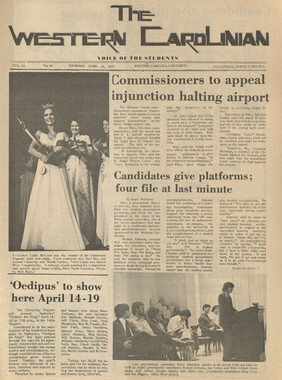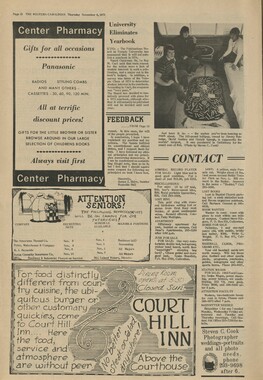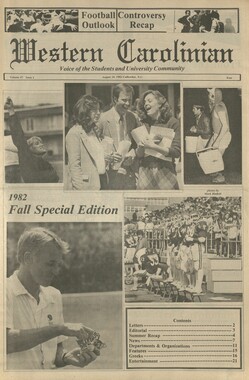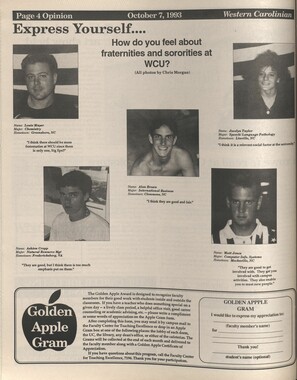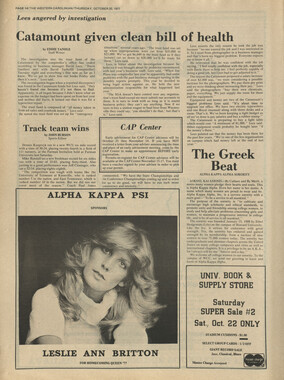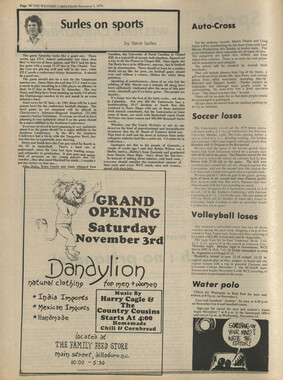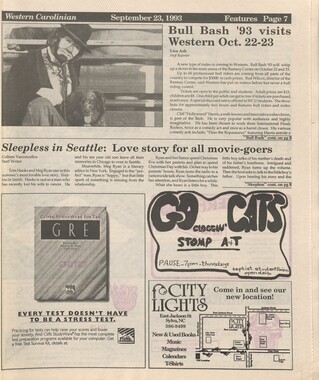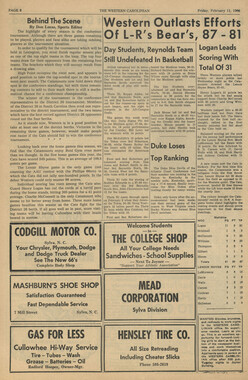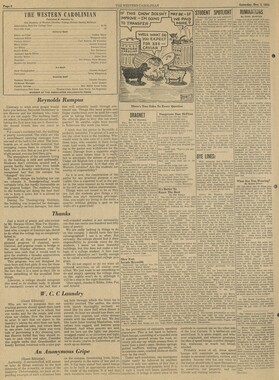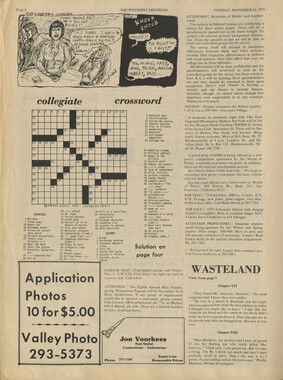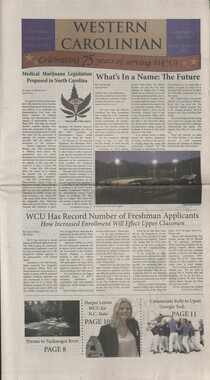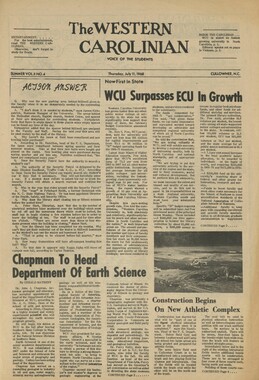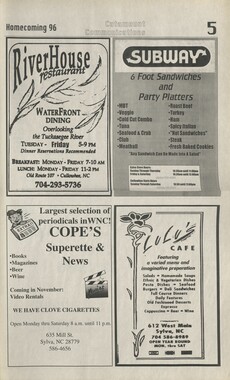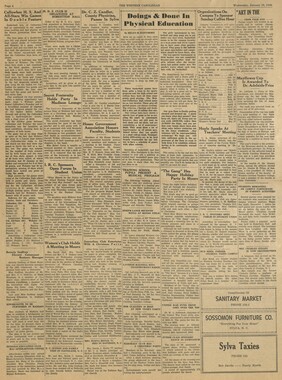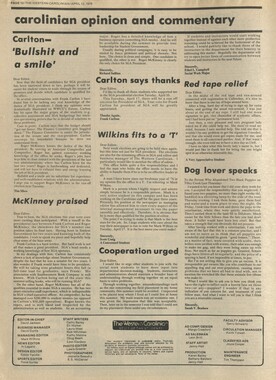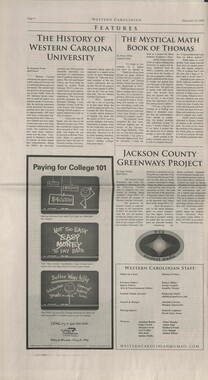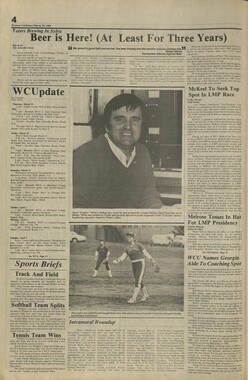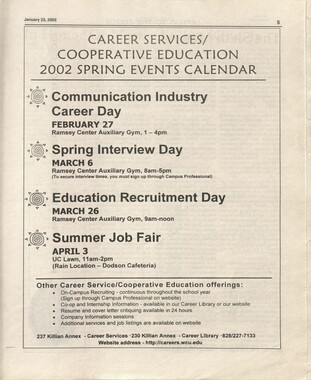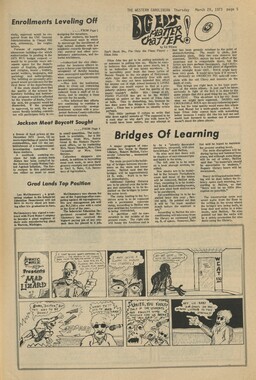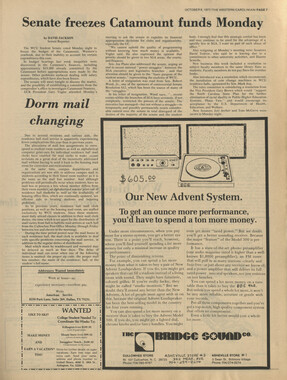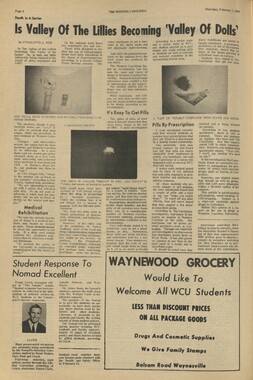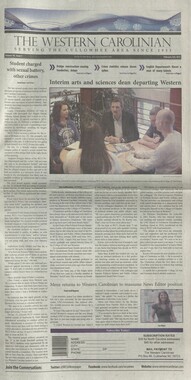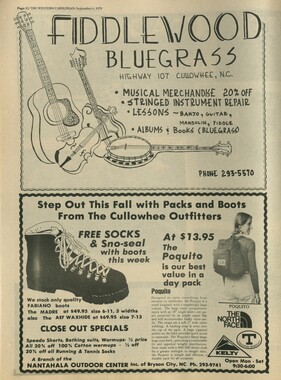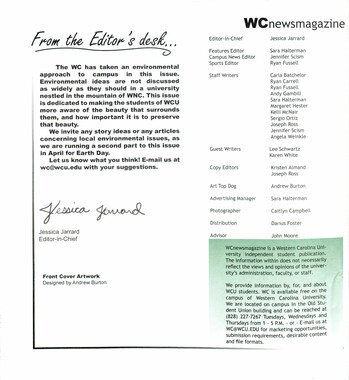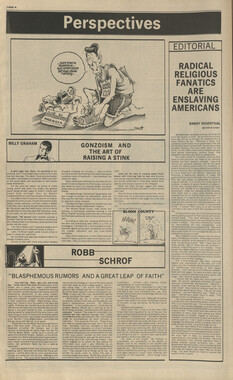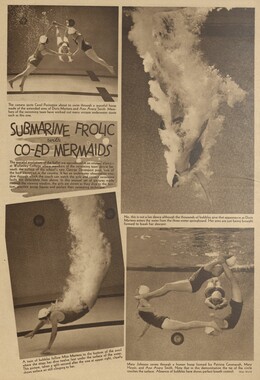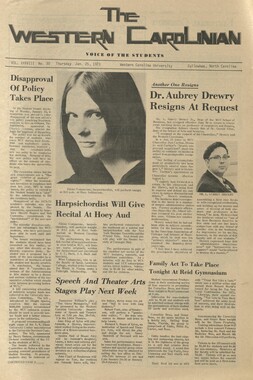Western Carolina University (21)
View all
- Canton Champion Fibre Company (2308)
- Cherokee Traditions (291)
- Civil War in Southern Appalachia (165)
- Craft Revival (1942)
- George Masa Collection (137)
- Great Smoky Mountains - A Park for America (3080)
- Highlights from Western Carolina University (422)
- Horace Kephart (973)
- Journeys Through Jackson (159)
- LGBTQIA+ Archive of Jackson County (89)
- Oral Histories of Western North Carolina (317)
- Picturing Appalachia (6617)
- Stories of Mountain Folk (413)
- Travel Western North Carolina (153)
- Western Carolina University Fine Art Museum Vitreograph Collection (129)
- Western Carolina University Herbarium (92)
- Western Carolina University: Making Memories (738)
- Western Carolina University Publications (2491)
- Western Carolina University Restricted Electronic Theses and Dissertations (146)
- Western North Carolina Regional Maps (71)
- World War II in Southern Appalachia (131)
University of North Carolina Asheville (6)
View all
- Allanstand Cottage Industries (62)
- Appalachian National Park Association (53)
- Bennett, Kelly, 1890-1974 (1463)
- Berry, Walter (76)
- Brasstown Carvers (40)
- Carver, George Washington, 1864?-1943 (26)
- Cathey, Joseph, 1803-1874 (1)
- Champion Fibre Company (233)
- Champion Paper and Fibre Company (297)
- Cherokee Indian Fair Association (16)
- Cherokee Language Program (22)
- Crowe, Amanda (40)
- Edmonston, Thomas Benton, 1842-1907 (7)
- Ensley, A. L. (Abraham Lincoln), 1865-1948 (275)
- Fromer, Irving Rhodes, 1913-1994 (70)
- George Butz (BFS 1907) (46)
- Goodrich, Frances Louisa (120)
- Grant, George Alexander, 1891-1964 (96)
- Heard, Marian Gladys (60)
- Kephart, Calvin, 1883-1969 (15)
- Kephart, Horace, 1862-1931 (313)
- Kephart, Laura, 1862-1954 (67)
- Laney, Gideon Thomas, 1889-1976 (439)
- Masa, George, 1881-1933 (61)
- McElhinney, William Julian, 1896-1953 (44)
- Niggli, Josephina, 1910-1983 (10)
- North Carolina Park Commission (105)
- Osborne, Kezia Stradley (9)
- Owens, Samuel Robert, 1918-1995 (11)
- Penland Weavers and Potters (36)
- Roberts, Vivienne (15)
- Roth, Albert, 1890-1974 (142)
- Schenck, Carl Alwin, 1868-1955 (1)
- Sherrill's Photography Studio (2565)
- Southern Highland Handicraft Guild (127)
- Southern Highlanders, Inc. (71)
- Stalcup, Jesse Bryson (46)
- Stearns, I. K. (213)
- Thompson, James Edward, 1880-1976 (226)
- United States. Indian Arts and Crafts Board (130)
- USFS (683)
- Vance, Zebulon Baird, 1830-1894 (1)
- Weaver, Zebulon, 1872-1948 (58)
- Western Carolina College (230)
- Western Carolina Teachers College (282)
- Western Carolina University (2008)
- Western Carolina University. Mountain Heritage Center (18)
- Whitman, Walt, 1819-1892 (10)
- Wilburn, Hiram Coleman, 1880-1967 (73)
- Williams, Isadora (3)
- Cain, Doreyl Ammons (0)
- Crittenden, Lorraine (0)
- Rhodes, Judy (0)
- Smith, Edward Clark (0)
- Appalachian Region, Southern (3032)
- Asheville (N.C.) (1945)
- Avery County (N.C.) (26)
- Blount County (Tenn.) (195)
- Buncombe County (N.C.) (1680)
- Cherokee County (N.C.) (283)
- Clay County (N.C.) (556)
- Graham County (N.C.) (238)
- Great Smoky Mountains National Park (N.C. and Tenn.) (525)
- Haywood County (N.C.) (3573)
- Henderson County (N.C.) (70)
- Jackson County (N.C.) (4924)
- Knox County (Tenn.) (35)
- Knoxville (Tenn.) (13)
- Lake Santeetlah (N.C.) (10)
- Macon County (N.C.) (421)
- Madison County (N.C.) (216)
- McDowell County (N.C.) (39)
- Mitchell County (N.C.) (135)
- Polk County (N.C.) (35)
- Qualla Boundary (982)
- Rutherford County (N.C.) (78)
- Swain County (N.C.) (2185)
- Transylvania County (N.C.) (270)
- Watauga County (N.C.) (12)
- Waynesville (N.C.) (86)
- Yancey County (N.C.) (72)
- Aerial Photographs (3)
- Aerial Views (60)
- Albums (books) (4)
- Articles (1)
- Artifacts (object Genre) (228)
- Bibliographies (1)
- Biography (general Genre) (2)
- Cards (information Artifacts) (38)
- Clippings (information Artifacts) (192)
- Copybooks (instructional Materials) (3)
- Crafts (art Genres) (622)
- Depictions (visual Works) (21)
- Design Drawings (1)
- Digital Moving Image Formats (2)
- Drawings (visual Works) (185)
- Envelopes (101)
- Exhibitions (events) (1)
- Facsimiles (reproductions) (1)
- Fiction (general Genre) (4)
- Financial Records (12)
- Fliers (printed Matter) (67)
- Glass Plate Negatives (381)
- Guidebooks (2)
- Internegatives (10)
- Interviews (822)
- Land Surveys (102)
- Letters (correspondence) (1045)
- Manuscripts (documents) (618)
- Maps (documents) (177)
- Memorandums (25)
- Minutes (administrative Records) (59)
- Negatives (photographs) (6090)
- Newsletters (1290)
- Newspapers (2)
- Notebooks (8)
- Occupation Currency (1)
- Paintings (visual Works) (1)
- Pen And Ink Drawings (1)
- Periodicals (194)
- Personal Narratives (10)
- Photographs (12977)
- Plans (maps) (1)
- Poetry (6)
- Portraits (4568)
- Postcards (329)
- Programs (documents) (181)
- Publications (documents) (2444)
- Questionnaires (65)
- Relief Prints (26)
- Sayings (literary Genre) (1)
- Scrapbooks (282)
- Sheet Music (2)
- Slides (photographs) (402)
- Songs (musical Compositions) (2)
- Sound Recordings (801)
- Specimens (92)
- Speeches (documents) (18)
- Tintypes (photographs) (8)
- Transcripts (328)
- Text Messages (0)
- A.L. Ensley Collection (275)
- Appalachian Industrial School Records (7)
- Appalachian National Park Association Records (336)
- Axley-Meroney Collection (2)
- Bayard Wootten Photograph Collection (20)
- Bethel Rural Community Organization Collection (7)
- Blumer Collection (5)
- C.W. Slagle Collection (20)
- Canton Area Historical Museum (2110)
- Carlos C. Campbell Collection (462)
- Cataloochee History Project (64)
- Cherokee Studies Collection (4)
- Daisy Dame Photograph Album (5)
- Daniel Boone VI Collection (1)
- Doris Ulmann Photograph Collection (112)
- Elizabeth H. Lasley Collection (1)
- Elizabeth Woolworth Szold Fleharty Collection (4)
- Frank Fry Collection (95)
- George Masa Collection (173)
- Gideon Laney Collection (452)
- Hazel Scarborough Collection (2)
- Hiram C. Wilburn Papers (28)
- Historic Photographs Collection (236)
- Horace Kephart Collection (861)
- Humbard Collection (33)
- Hunter and Weaver Families Collection (1)
- I. D. Blumenthal Collection (4)
- Isadora Williams Collection (4)
- Jesse Bryson Stalcup Collection (47)
- Jim Thompson Collection (224)
- John B. Battle Collection (7)
- John C. Campbell Folk School Records (80)
- John Parris Collection (6)
- Judaculla Rock project (2)
- Kelly Bennett Collection (1482)
- Love Family Papers (11)
- Major Wiley Parris Civil War Letters (3)
- Map Collection (12)
- McFee-Misemer Civil War Letters (34)
- Mountain Heritage Center Collection (4)
- Norburn - Robertson - Thomson Families Collection (44)
- Pauline Hood Collection (7)
- Pre-Guild Collection (2)
- Qualla Arts and Crafts Mutual Collection (12)
- R.A. Romanes Collection (681)
- Rosser H. Taylor Collection (1)
- Samuel Robert Owens Collection (94)
- Sara Madison Collection (144)
- Sherrill Studio Photo Collection (2558)
- Smoky Mountains Hiking Club Collection (616)
- Stories of Mountain Folk - Radio Programs (374)
- The Reporter, Western Carolina University (510)
- Venoy and Elizabeth Reed Collection (16)
- WCU Gender and Sexuality Oral History Project (36)
- WCU Mountain Heritage Center Oral Histories (25)
- WCU Oral History Collection - Mountain People, Mountain Lives (71)
- WCU Students Newspapers Collection (1923)
- Western North Carolina Tomorrow Black Oral History Project (69)
- William Williams Stringfield Collection (2)
- Zebulon Weaver Collection (109)
- African Americans (390)
- Appalachian Trail (35)
- Artisans (521)
- Cherokee art (84)
- Cherokee artists -- North Carolina (10)
- Cherokee language (21)
- Cherokee pottery (101)
- Cherokee women (208)
- Church buildings (190)
- Civilian Conservation Corps (U.S.) (111)
- College student newspapers and periodicals (2012)
- Dams (108)
- Dance (1023)
- Education (222)
- Floods (63)
- Folk music (1015)
- Forced removal, 1813-1903 (2)
- Forest conservation (220)
- Forests and forestry (1198)
- Gender nonconformity (4)
- Great Smoky Mountains National Park (N.C. and Tenn.) (181)
- Hunting (47)
- Landscape photography (25)
- Logging (122)
- Maps (83)
- Mines and mineral resources (9)
- North Carolina -- Maps (18)
- Paper industry (38)
- Postcards (255)
- Pottery (135)
- Railroad trains (72)
- Rural electrification -- North Carolina, Western (3)
- School integration -- Southern States (2)
- Segregation -- North Carolina, Western (5)
- Slavery (5)
- Sports (452)
- Storytelling (243)
- Waterfalls -- Great Smoky Mountains (N.C. and Tenn.) (66)
- Weaving -- Appalachian Region, Southern (280)
- Wood-carving -- Appalachian Region, Southern (328)
- World War, 1939-1945 (173)
Western Carolinian Volume 46 Number 14, December 3, 1981
Item
Item’s are ‘child’ level descriptions to ‘parent’ objects, (e.g. one page of a whole book).
-
-
News Western Carolinian/December 3, 1981 48 Selected Forty-eight Western Carolina University seniors have been selected for inclusion in the 1982 edition of "Who's Who Among Students in American universities and Colleges." Selection was made by campus nominating committees and editors of the annual directory on the basis of academic achievement, community service, leadership in extracurricular activities and future potential. The "Who's Who" volume this year lists elite students from more than 1,300 institutions of higher learning in all 50 states, the District of Columbia, and several foreign nations. The directory was first published in 1934. Western Carolina University students selected are (including major and hometown): Kenneth M. Allen, accounting, Kennesaw, Ga.; James P. Armstrong III, geography, High Point; Deborah Burns Atwood.art, Mebane; Sarah V. Benbow, special education and human services, Statesville; Lisa Denise Biggs, criminal justice, Bryson City; Gayle Denise Billings, criminal justice, Tobaccoville; Judy Wells Bowers, nursing, Toccoa, Ga.; Bryant Wayne Bowman, English, Mount Airy; Bryan Richard Brown, management, Weaverville; Wayna Renee Brown, education, Leicester; Patsy Lane Bullard, nursing, Sanford; Tony Lynn Bumgarner, criminal justice, Sylva; Marilu Penland Caldwell, english, Fletcher. And, Martha Elizabeth Davis, psychology and child development, Valdese; Gregory Reinhardt Dennis, biology, Fairfax, Va.; Robert Neal Duncan, information systems, Gastonia; Mary C. Elliott, music education, Pilot Mountain; Cheryl Denise Fore, marketing, Asheville; Dennis Eugene Funderburke, criminal justice, Hickory; Richard Philip Hartmann, industrial arts education, Huntington, NY; Robin E. Hawekotte, elementary education and reading, Kitty Hawk; Allen Lee hincher, accounting, Elkin; Mark Douglas Hipps, political science, Asheville; Barbara Jean Hullar, social work, Central Square,.NY; James Robert Hyatt,criminal justice, Brevard. Also, James Scott Jeffords, management and marketing, Winston-Salem; Ann Putnam Johnson, nursing, Waynesville; Harry Lee Litaker Jr., radio and television, Concord; Jill Ann Long, nursing, Monroe; Vivian Leigh Mills, nursing, Raleigh; Helen Katherine E. Moore, english, Germanton; Sara J. Morris, home economics, Cullowhee; Lee Ellen Morrison, middle grade education, Canton; Jerry Michael Naylor, business, Mocksville; Jacqueline Marie Palmer, biology. Land O'Lades, Fla.; Lisa Ann Pleasant, political science. Wendell; Susan Lynne Ridenhour, middle grade education and math, Murphy. Kevin Rowell Robertson, psychology, Clover; Jeffrey C. Ryan, geology, Raleigh; David Mark Sawyer, political science, Winston-Salem; Timothy Mark Thompson, marketing, Pfafftown; Quang T. Tran, chemistry, San Jose, CA; Paul Verderber, german, Asheville; Robert Lee Wallace, english, Durham; Carl Taylor Warner, geography, Raleigh; Cathy Diane Watkins, business and accounting, Morrisville; Max Ray Williams, english, Sylva; and LuAnne Mae Woolard. education, Willow Springs. Movie Blues College Press Service The theater movie has come up against a fierce competitor, the videocassette. The ability to sit down to a current movie in your own living room seems to be drawing more and more people from the traditional movie theater. Although we still put down our $3 to $5 to see certain films, Americans are no longer flocking to see every film that comes out of Hollywood. This is a continuing trend. Although there was an upturn in box office sales this past summer, it was no more than an exception to the overall trend. Theater owners sold $2.75 billion in tickets last year and made another $600 million in concessions. But most of them feel their business will be undergoing a major transformation in the next five to ten years. Many observers expect the number of silver screens in America to drop by 33 percent. Drive-in movies will nearly drop out of sight and theaters in small towns will 1981-82 Basketball Cheerleaders photo by Doug Cavanah cease to exist. The number of theater sites had already decreased by 2 percent last year, even though the number of screens increased by 5 percent. This seemingly contradictory turn of events was caused by theater owners trying to economize by expanding the number of screens on his present location. Drive in theaters decreased both in numbers of sites and numbers of screens. Also worrying the film industry are the box office figures. Last year 1.02 billion tickets were sold, that is down to 9 percent from 1979. Before this summer, ticket sales in 1981 were the worst in 10 years. Whether this summer's surge in sales coupled with the usually good Christmas business will redeem 1981 for the movie industry is unknown. Throughout the 70s, ticket sales had been increasing from a record low of 820 million in 1971. The record high for attendance was in 1946 with 4.07 billion tickets having been sold. Also a problem for the movie houses is the fact that ticket prices, although steadily rising and considered by many as too high already, haven't kept pace with inflation. Another aspect the industry has to adjust to is the changing makeup and patterns of the audience. Last year those who were age 12 to 24, a group which constitutes 29 percent of the general population, bought 59 percent of the tickets. This means that about 35 percent of the population never sees the dim lights of a theater. Also, 25 percent of the population that attends at least one film a month account for almost 85 percent of all admissions. By contrast, in the late 1940s, before television turned on its bright rasor, the average American went to 33 movies a year. The drop in number of tickets sold brought on the trend of multi-screen theaters. Why? By showing more films you spread out your gamble. One big hit could pay for three bombs. Some complaints with the theaters today might be the high price, the smaller screens, some don't care for night movies anymore because of the crime rate. In these situations, the consumers are likely to opt for buying cable television which might be no more expensive than one outing at the movies for a household. One thing most people agree on is that drive-in theaters will be the worst hit by the impending trend away from the out-of-the-home cinema. The underlying reason is that for most of the drive-ins being close to a city, the land will become more profitable by development than by being operated as a drive-in. This is especially true with those drive-ins operated only part of the year due to inclement weather. If theaters in small towns begin to close down, there is a real danger to the industry itself. Not only will that revenue be lost, but young people may begin to get out of the habit of going to the movies. Industrial Diseases As we college students enter our senior year, we turn our attention toward searching for a job. In finding such a job, the benefits and salaries offered may blur our sights of the health hazards which may accompany the job. One of the most important of all occupationally related diseases are those involving our respiratory system according to Marcus M. Kelly, director of the National Institute for Occupational Safety and Health (NIOSH). Pneumoconiosis is the term used for the results of breathing dust that gives rise to chronic respiratory diseases. The dust responsible for pneumoconiosis can not be seen by the human eye. These tiny particles of dust enter the lungs of the workers and accumulate in there. In doing so it changes the anatomic functions of the lungs. Such changes have impaired many workers to the extent of leaving them either seriously disabled or even dead. Pneumoconiosis can occur in people with such occupations as coal mining, stone cutting, cotton mill working and even farming. Silicosis is caused by the inhalation of silica, or quartz or any other dust which may be created by mining of minerals. Silicosis is mainly responsible for the high rate of tuberculosis found in foundrymen and stonecutters. Black lung, which has been highly publicized recently, is a hazard caused by coal mining. Over 86,000 widows of coal miners were receiving benefits from Social Security in 1971. At that time 1500 applications for such benefits were being received a week. Byssinosis is a disease found in cotton mill workers. This is especially a problem for our area in which many of us will be receiving jobs as managers, supervisors and health inspectors. Byssinosis is caused by the small particles of dust created by the fabric made in these mills. Asbestos is another product that creates harmful dust which may be inhaled. Asbestos is used in large amounts as a fire-retardent. We as college educated individuals should realize the hazards caused by these diseases. As we enter our roles in upper management, we should take corrective measures in limiting these hazards not only for the safety of the employee but also for the financial gains of the company. Millions of dollars are lost each year due to illnesses of employees. Such losses may involve paid sick leave, higher insurance rates, medical expenses and the hiring of parttime employees. Another considerations may be in the hiring of new employees and the time involved in training these new employees. We may also need to evaluate whether the money and benefits of working in such an atmosphere is worth the shortness of our own life.
Object
Object’s are ‘parent’ level descriptions to ‘children’ items, (e.g. a book with pages).
-
The Western Carolinian is Western Carolina University's student-run newspaper. The paper was published as the Cullowhee Yodel from 1924 to 1931 before changing its name to The Western Carolinian in 1933.
-
